Fashion CEO Reopens Desert-Meets-Sea Mexican Oasis

One hour from Cabo San Lucas, Mexico, beyond the beaten bar scene, at the end of a mile-long dirt road sandwiched by poblano chili fields and calla lily gardens, is a cement gateway into a desert oasis.
Described as “barefoot luxury meets Mexican soul,” Rancho Pescadero, part of Hyatt’s Unbound Collection and the passion project of Torrid chief executive officer Lisa Harper, sits quietly on 30 oceanfront acres in the small fishing village of El Pescadero on the Pacific coast of Mexico’s Baha California Sur.
More from WWD
Slated for a soft open in mid-October and a grand opening the first week of November following a two-year closure for its rebirth, the new, improved, expanded and responsibly focused escape near the beachtown of Todos Santos may be just what the wellness guru ordered.
The first step is crossing over, or what Harper uses as the substitute for checking in. Through that cement gateway, guests can choose a brick path before them on one side, or begin their barefoot journey via a sand path on the other. Where they arrive is what the property calls the “Access.” And there are no check-in desks.
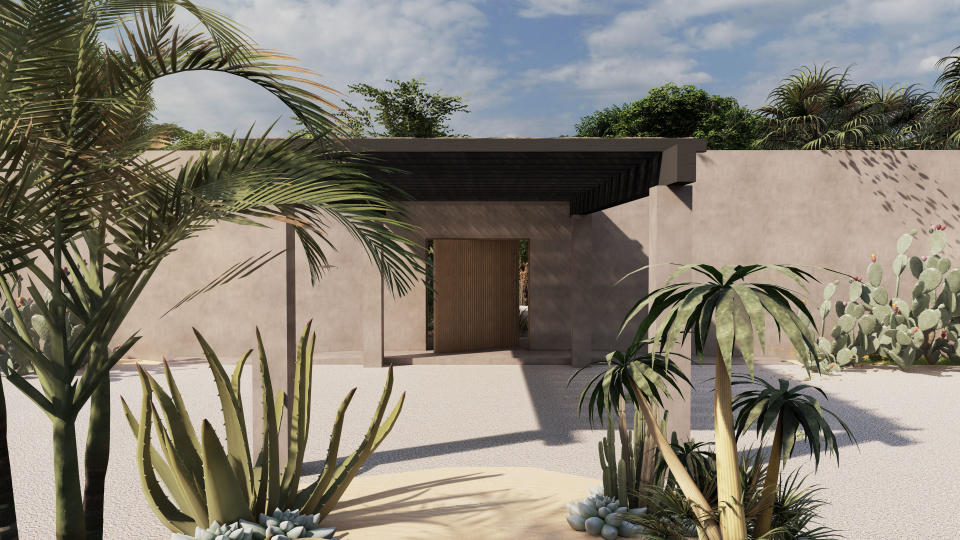
Courtesy Rancho Pescadero
“[It] isn’t really a lobby as much as it is that opportunity to cross over,” Harper says. “It’s this idea that you’ve left your flight and your passport and immigration and making sure the mail was taken care of and all of those things of your life that got you to this place, and that there’s a moment where you actually, consciously, think about crossing over into this experience of your vacation. The experience of vacation is so important. You’re regenerating your creativity, your mind-set, alleviating stress, all of those things.
“[It’s] the ‘Wizard of Oz’ kind of crossing over in the Technicolor post-twister,” she adds.
The stress relief continues beyond the Access, where the property — which is made up of more than 50 percent plants, most of them indigenous — counts nine gardens, a bird sanctuary, a sea turtle hatchery and a huerta, or food garden of sorts, that provides Rancho Pescadero with much of what it serves guests across its three culinary experiences. All of this surrounds the property’s 103 suites and villas, nearly all of which are ocean-facing.
Here, just as the line between indoor and outdoor is superbly blurred, so too is the line between utmost simplicity and ultimate luxury.
It’s, as property architect Alejandra Templeton of locally based firm Indigo Añil, puts it, the melding of Mexican culture, the desert, the sea and the essence of ranch life. What guests will witness and feel on the property mimics the surrounding landscape where, despite being in the desert, El Pescadero’s location on the Baha peninsula and its proximity to the Sierra de la Laguna mountains, which attract rain, make it lush and ripe for vegetation.
As such, Rancho Pescadero is lush and ripe with vegetation, with a flow as natural as the surrounding vistas and a design palette that embraces ocean blues and sand hues amid the gardens’ greens, cacti and succulents.
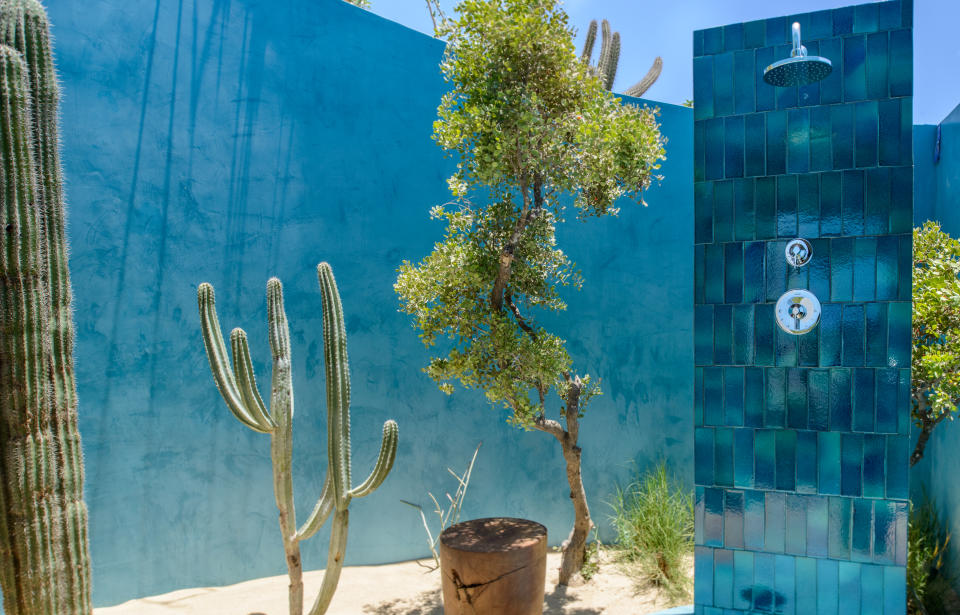
Albert Lewis/Courtesy
The 12 oceanfront villas in particular transition seamlessly from indoor to open-air, with patio doors that almost entirely disappear, giving way to personalized plunge pools overlooking treescapes and seascapes, fire pits and private beach access. Outdoor rainfall showers with peacock-colored talavera tiles handmade by local artisans give the serene sense of showering as if under the sea. (For those more inclined to cleanse indoors, there’s the option of bathing in grand black terrazzo bathtubs overlooking the outdoor shower oasis.)
Decor in the rooms offers the same nod to nature, with warm woods and neutral tones and texture from locally woven textiles and artisan-made pottery and copper vases from Western Mexico’s Michoacán. Black headboards made in Guadalajara offer contrast to the leather tassels from Chihuahua.
Templeton’s aim with the design was to source just about everything locally and fair trade, to keep the money in the community. Both within and beyond the rooms, everything is there for a reason, she says.
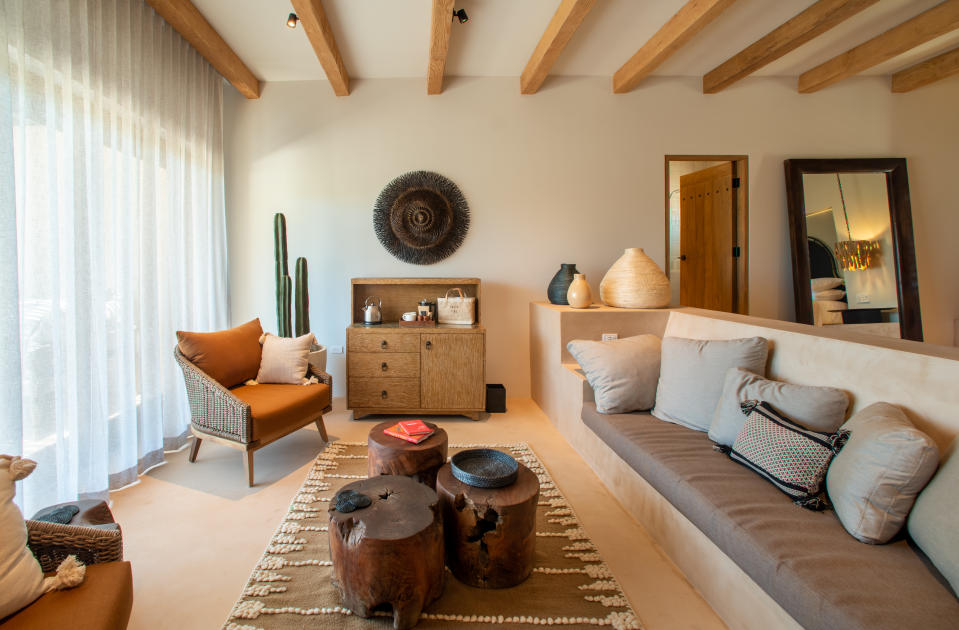
Albert Lewis/Courtesy
“I don’t like that word decorating and decorator because for me it’s not that. Every piece should be there for a reason,” she says. “So, when we use artisanal items that are hung on the wall or that are placed in one area, I hope that people visiting the hotel go by and are curious about that piece and they wonder where it’s from, how it’s made, why it has the color that it has, why it has the shape that it has, who did it. And they can get to know different places of Mexico through that, that it sparks their curiosity and [makes them] want to go and visit those places.”
There’s much to be experienced at Rancho Pescadero. A sample day on the property could begin something like this: Wake to the tradition of a breakfast basket hung outside your door, complete with freshly baked conchas, or Mexican breads, and “whatever the freshest fruit is from the local area,” Harper says. That could be anything from mangoes to strawberries, passion fruit or picks from the onsite orange grove. Then a walk on the beach or a complimentary yoga class in one of the two yoga shalas might come next.
From there, the day could unfold into some pampering at the 25,000-square-foot spa and wellness center, where the soaps, scrubs and oils are made and distilled from the plants grown on the property. Guests even have the option of creating custom blends for their treatments at the apothecary. There’s also hydrotherapy, a Himalayan salt sauna and native cacao rituals complete with guided breath work.
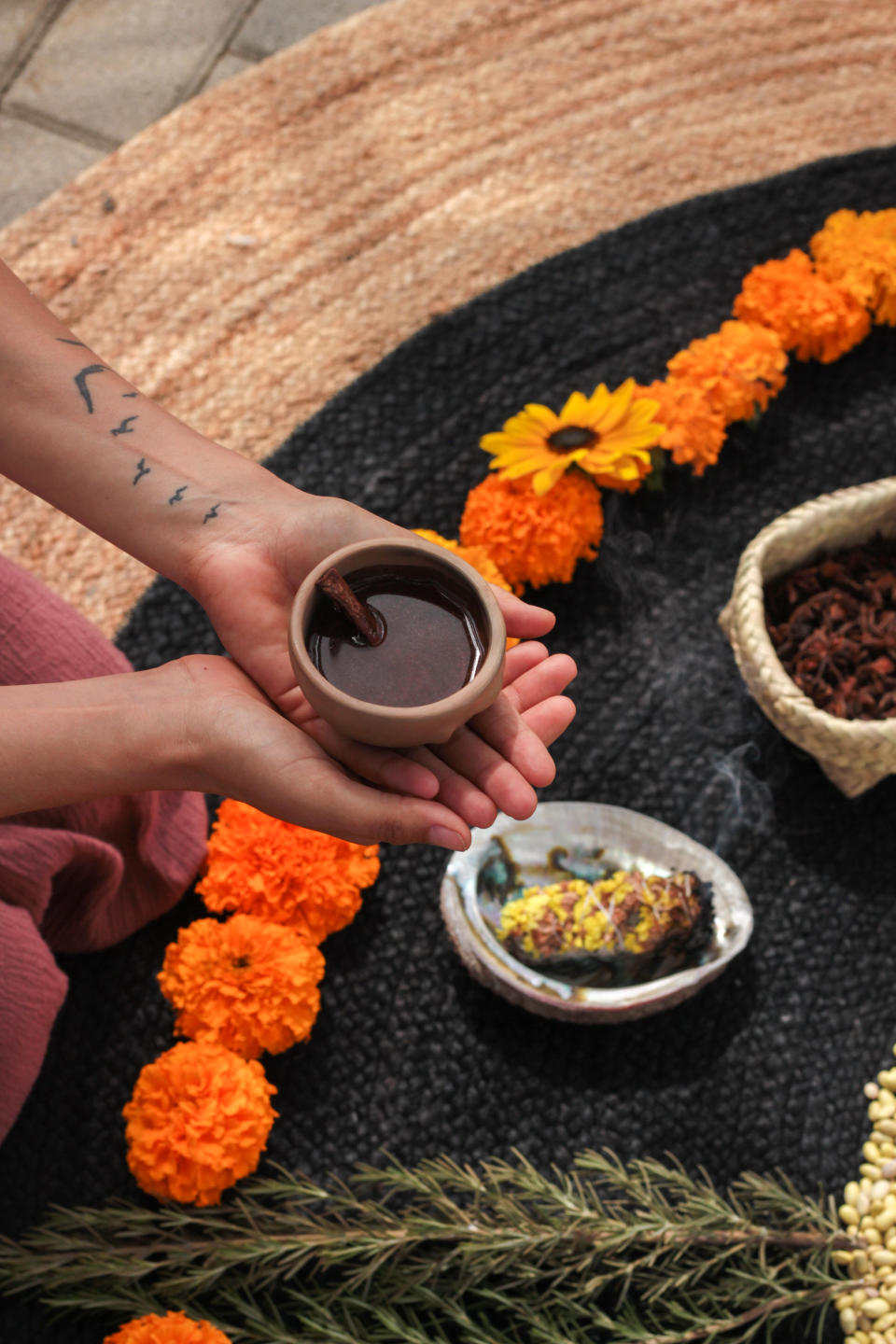
Courtesy Rancho Pescadero
When it’s time to eat, there are three options — all helmed by culinary director Sandro Falbo. Centro café serves up classic Mexican dishes near the pool. At Botánica, it’s about a communal experience at an orchard dining table, where Falbo prepares osso bucco barbacoa, melding his Italian heritage with the Mexican style of cooking the meat underground, as the Mayans did. There’s also a traditional comal, or cast-iron griddle, for making fresh tortillas. Kahal, the property’s oceanfront restaurant with deconstructed walls that’s enveloped by a pool with a sunken cenote-style jacuzzi, is where the chef prepares ceviche, guacamole with seaweed chicharron and salt-crusted snapper with house-made Rancho salt.
But beyond just letting the farm-to-table dining experiences wash over them, guests have options as to how they partake. They can choose eggs from the huerta’s chicken coop for breakfast, for example, and pick fresh veggies from the garden for their own salad or for a complimentary salsa-making workshop. Why? It’s all part of the experience.
“The joy of going to the chicken coop and getting a couple of eggs and taking it to the chef and him making heuvos rancheros really articulates the way that people want to experience their time off. And that is not just a relationship to the property or to their own food, but they’re always going to remember going to get those eggs and having the heuvos rancheros, Harper says. “So it creates experiences that are remembered long past that margarita or the chips and salsa or the chilaquiles. It takes you to another very different experiential level that I think creates a memory for you that lasts decades. And that’s what we’re trying to do.”
When it’s time to drink, as Harper says, consider “the bartender your doctor.” Here, continuing the experiential consumption, imbibing guests can pick their own limes to garnish their mezcal, and supplement it with the “doctor’s” traditional medicinal tinctures that can be added to drinks “the same way you would add to your smoothie,” Harper says.
But above all, she may be proudest of Rancho Pescadero’s commitment to responsibility and regenerative tourism.
Taking things well beyond its commitment to zero single-use plastics, the property is focused on giving back to the land it sits on. Because it had been home to chili pepper farmers since 1938 before she bought the land to build the original 12-room hotel, which opened in 2009, Harper and her team have replanted “thousands of plants and trees” in an effort to reforest all the plants that had to be moved during construction. Rancho Pescadero collects rainwater for its gray water recycling system to maintain onsite landscaping and a desalination plant provides the property’s fresh drinking water. Only electric carts and bikes are used throughout the property to keep carbon emissions to a minimum, composting is done onsite and solar panels are being installed. Even in the rebuild over the last two years, the team reused construction materials from the original property.
At present, Rancho Pescadero is in the process of providing housing for all employees who want it, and the plan is to ultimately extend that offering to locals in the broader community — particularly because expats’ increasing interest in the area has made land and property challenging to attain or maintain for many. A local pre-school is part of the project and this year, the team will break ground on a technical school to provide education and upskilling that has been scarce in the community.
This property, Harper says, has “kind of been my life’s work. It’s a parallel path with my retail career but it really leans on the same kind of skillset and experience: it’s providing a vision and building something from nothing that thinks about not just the guests but also…building a sustainable life for the associates, for the community, for the people who work there. And that’s as important as anything else. It all has to work for it to truly be regenerative travel.”
If you’re looking to disappear — and make your environmental footprint almost as imperceptible — this may be the place.
Rates start at $895/night, though there’s an offer of 20 percent off best available rates and 15 percent off spa services for bookings made through Nov. 30, 2022.
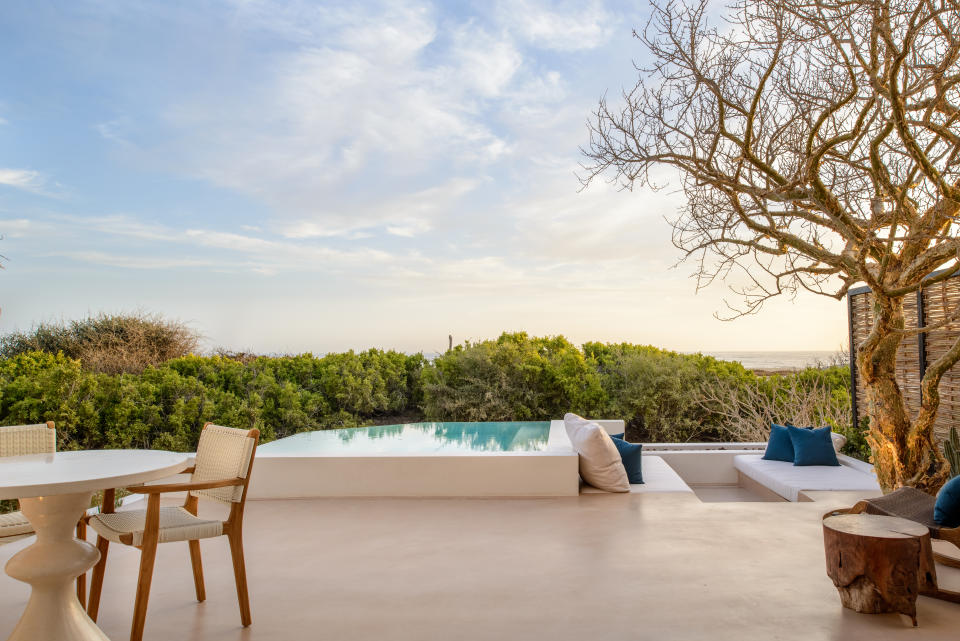
Albert Lewis/Courtesy
Best of WWD

